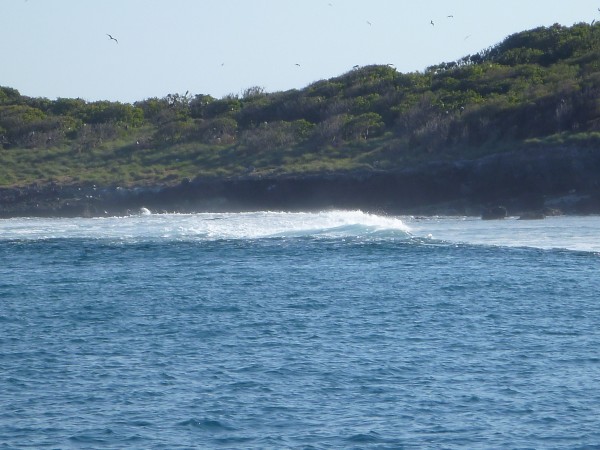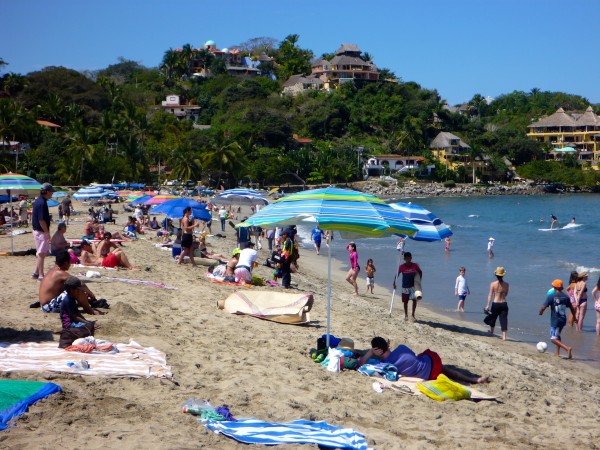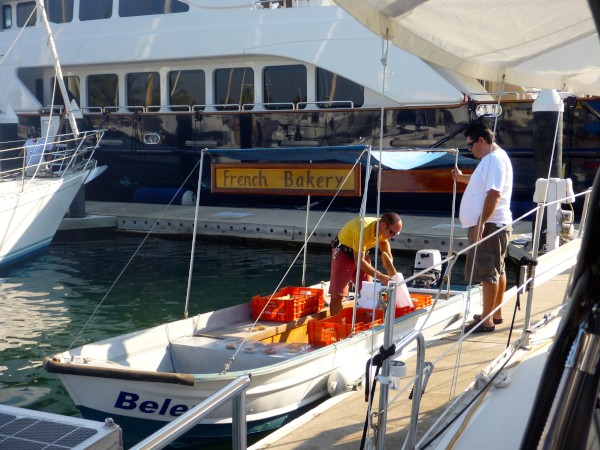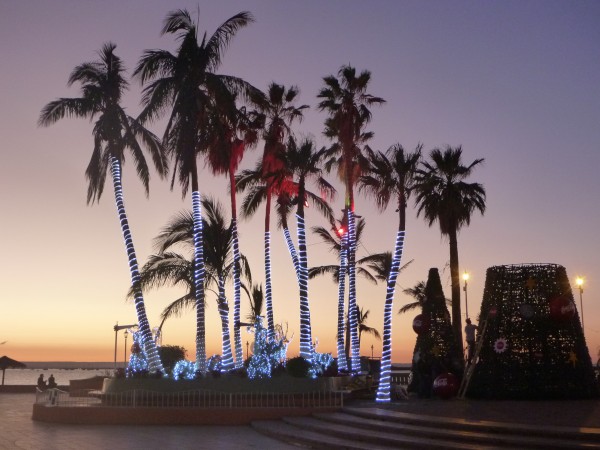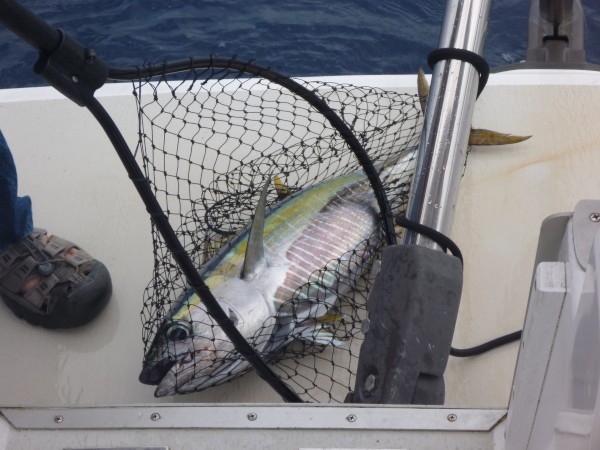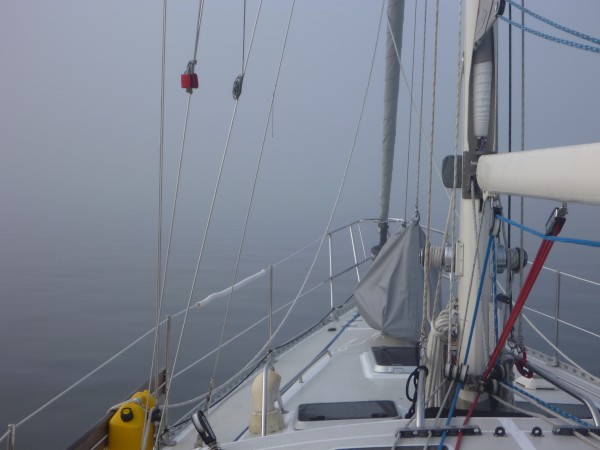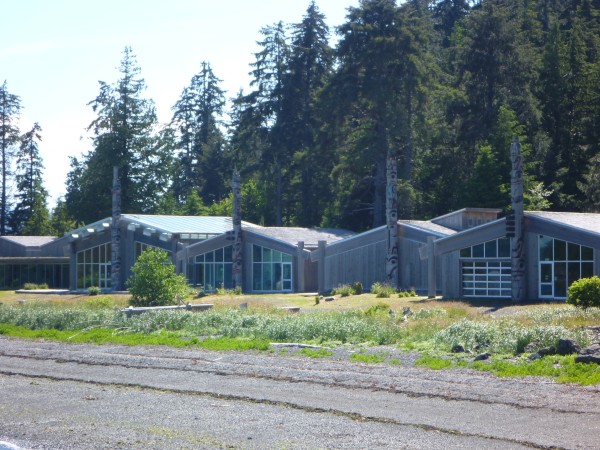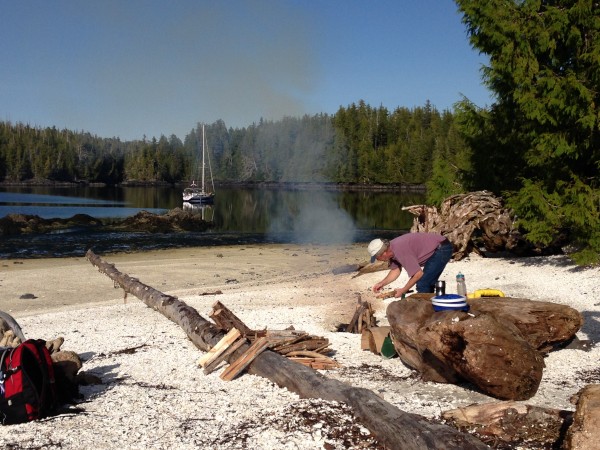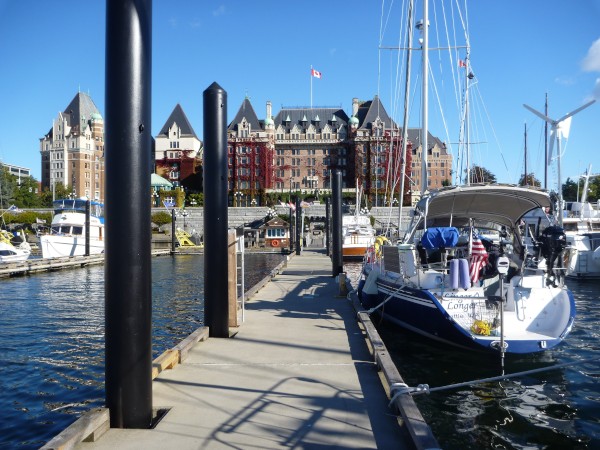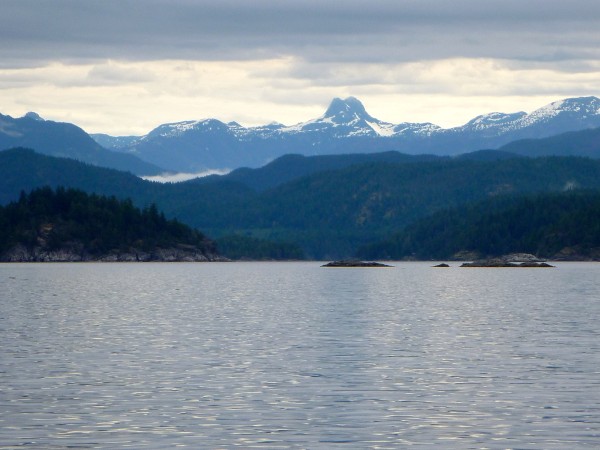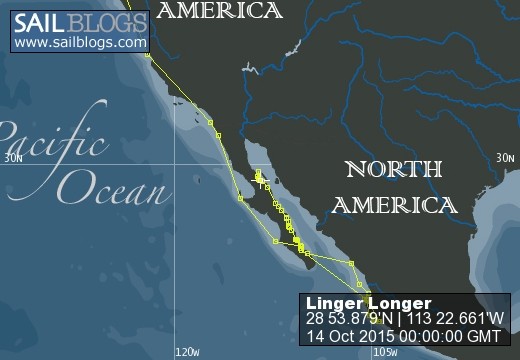
Linger Longer
14 September 2016
06 August 2016
09 July 2016
19 March 2016
19 December 2015
18 December 2015
18 December 2015
03 November 2015
18 July 2015
24 May 2015
04 April 2015
31 March 2015
26 February 2015
15 February 2015 | Barra de Navidad
07 February 2015 | Tenacatita Bay
04 February 2015
26 January 2015 | 19 18.051'N
04 January 2015 | La Cruz, Nayarit, Mexico
25 December 2014 | La Paz, Baja California Sur, Mexico
01 December 2014 | Ensenada, Mexico
Reflections by Kirk 6-2-2014
02 June 2014 | Taku Harbor
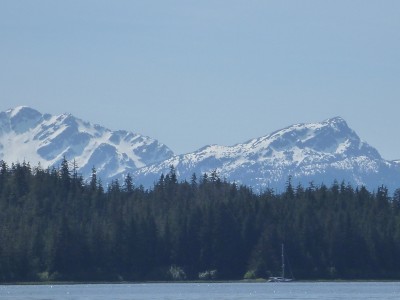
I have always enjoyed reading James Michener 's historical novels. He has written lengthy books of Colorado, Hawaii, Texas, Chesapeake Bay, Mexico, Poland and many more. Nearly all of them begin with the formation of the land mass then proceed to the first plants and animals, to the introduction of humans, and then follows a few family lines to modern times. His books have given me a basic framework for understanding the places about which he writes. While we were in Victoria over the winter, I got James Michener's Alaska from the library. Once again, I got a feel for the geography, the climates, flora, fauna, and the history of the people who settled here. Michener tends to blend factual information along with his own imaginings. In Alaska, he traces a relatively long history of a place called Taku Harbor. He painted a very pretty picture of this place and I was thrilled when I found a place called Taku Harbor on our nautical charts. It is a real, not imaginary place and I had to go there even if it turned out to be a lousy place.
It did not disappoint. We loved Taku Harbor. Our arrival was on the Sunday of Memorial Day weekend, blue skies and warm temperatures. Other than being in marinas, this bay contained the most boats that we have seen in one place in a long time. Holiday weekend and beautiful weather brought maybe ten or twelve boats from Juneau along with one or two other cruisers like us. The harbor was large, very well protected from wind and waves, and was in a most picturesque setting. The State of Alaska and the Borough of Juneau had cooperated in the construction of two sets of floats that were nearly new, nicely maintained, and free of charge. Mental images that Michener had implanted in my mind were not exactly what I saw, but the history he painted was very easy to discern. Tlingits (pronounced Klingit) were the early settlers of this land. Michener described a home of the Tlingit chief near the mouth of a river that led up to a beautiful lake surrounded by five majestic snow covered peaks. We kayaked across the harbor and up the river a ways where a small, but modern type home was nestled amongst the trees just above the banks of the river. It was very easy to visualize this a few hundred years ago with a wooden longhouse, elaborate carved posts, smoke drifting from a hole in the roof, and a totem pole depicting the family ties and legends associated with said chief. I envy Tlingits. They are one of the few native cultures of North America who have managed to maintain their culture, despite efforts of missionaries and even governments to eliminate it. They now live in modern homes rather than longhouses, operate power driven boats rather than dugout canoes, and shop in grocery stores rather than living purely off the land and sea.
Like most of the coastal bands of Washington, British Columbia, and Alaska, the huge bounty of the sea enabled them to develop art, dance, music and storytelling to a degree not possible if existence was mostly just about survival. The language and oral histories have survived. The art, music and dance have evolved. We spoke with a Tlingit women who explained the keeping of oral history. The stories must be repeated exactly the same every time one is told. If you mess up two hours into a story, it must be started over at the beginning. Some stories tell of the history, some explain good and bad behaviors; many tell of the spirit world, and most combine all of this together often combined with music and dance. The Tlingits of old were a fierce people, quick to defend their territories from invaders and just as likely to mount raids for a fresh supply of slaves. These are a spiritual people who always have been and still strive to be good stewards of the natural world. The language, art forms, oral histories, living from what nature provides are remembered and these traditions are passed on to future generations as they always have been. We found them to be friendly and welcoming in all of the places where we have met them.
As we continued our kayak trip around the harbor, we came upon the ruins of the old cannery. Lots of rotting wooden piles that once supported docks with many buildings, old metal boilers, miscellaneous relics of a thriving past. Alaska was purchased from Russia for something like two cents an acre in 1867 and became our 49th state in 1959. During the intervening 92 years, Alaska's natural resources were exploited with almost no controls. In Michener's story, Taku Harbor takes a center stage. Huge salmon runs had entered the small river for as long as the Tlingits had lived there, a very long time. Due to it's being the nearest United States city, intrepid entrepreneurs from Seattle were the first to realize that fortunes could be made on this delectable, plentiful, nutritious fish. It is one of the few fish that could be packed in tin cans and marketed around the world. A sawmill was constructed to furnish lumber for the pilings, dock planking, cannery buildings administrative buildings, and dormitories for the Chinese laborers needed to gut, clean, pack, seal, label and crate thousands of cans of salmon. Fishermen quickly learned of a buyer within a day or two of extremely productive waters and flocked to the area. Not long after construction of the cannery, the owners devised a fish trap system that could capture nearly all of the thousands of fish that migrated back to the Taku River every year. Greed apparently won out over common sense. With few salmon left to reproduce in the Taku River, the huge runs started to dwindle. Many were still available to the fishermen as there are many other rivers and streams that still supported huge natural salmon runs and the cannery continued to survive. Eventually, more efficient fishing methods and lack of a managed fisheries plan led to an overall decline in the number of fish available to harvest. Development of on-board refrigeration and ice making systems enabled fishermen to transport the catch closer to population and transportation centers where fish garnered a higher price. The cannery was closed and left to deteriorate to what we see today.
It took a long time for laws to reach Alaska. Enforcement and a system of courts were slow to happen. For most Americans, Alaska was the frozen wasteland, where a few men had made a lot on money finding gold. It was not hard for the Seattle entrepreneurs to convince Congress that there were just not enough people, not enough at stake to justify expenditures of federal dollars on things like laws, courts and law enforcement up in the frozen wasteland. So the uncontrolled exploitation of trees, minerals, and salmon ran unabated until 1959 when Alaskans finally convinced Congress that there were indeed sufficient residents and easily habitable areas to justify statehood. One of the very first state laws was to forbid the use of fish traps such as the one in Taku Harbor. There is undoubtedly some local bias, but Alaskans seem to believe that the fisheries management practices established by the state are now models for the rest of the world to emulate. The ubiquitous fish farms that we saw in British Columbia are apparently not allowed up here. I have mixed feelings about this. Bad side effects of fish farms are well documented; the inevitable escape of non-native Atlantic salmon into the native environment, the effects of pelletized food, growth hormones and antibiotics released into the water, and the unnaturally high concentrations of fish excrement. Balanced against these problems are the world's ever-growing population and the resultant need for larger quantities of nutritious food sources.
Taku Harbor was a good stop for us. It was the first time in a while where we spent multiple nights at anchor in the same place. We felt very safe and the views out of the harbor across Stephens Passage to the mountains of Admiralty Island are awesome. I finally caught some fish, relieving, a least a little bit, the "bad fisherman" complex that was beginning to depress me.
Sitka is also a place that figures prominently in Michener's book. We have intentions of going to Sitka, but have much to see between here and there.
Kirk
It did not disappoint. We loved Taku Harbor. Our arrival was on the Sunday of Memorial Day weekend, blue skies and warm temperatures. Other than being in marinas, this bay contained the most boats that we have seen in one place in a long time. Holiday weekend and beautiful weather brought maybe ten or twelve boats from Juneau along with one or two other cruisers like us. The harbor was large, very well protected from wind and waves, and was in a most picturesque setting. The State of Alaska and the Borough of Juneau had cooperated in the construction of two sets of floats that were nearly new, nicely maintained, and free of charge. Mental images that Michener had implanted in my mind were not exactly what I saw, but the history he painted was very easy to discern. Tlingits (pronounced Klingit) were the early settlers of this land. Michener described a home of the Tlingit chief near the mouth of a river that led up to a beautiful lake surrounded by five majestic snow covered peaks. We kayaked across the harbor and up the river a ways where a small, but modern type home was nestled amongst the trees just above the banks of the river. It was very easy to visualize this a few hundred years ago with a wooden longhouse, elaborate carved posts, smoke drifting from a hole in the roof, and a totem pole depicting the family ties and legends associated with said chief. I envy Tlingits. They are one of the few native cultures of North America who have managed to maintain their culture, despite efforts of missionaries and even governments to eliminate it. They now live in modern homes rather than longhouses, operate power driven boats rather than dugout canoes, and shop in grocery stores rather than living purely off the land and sea.
Like most of the coastal bands of Washington, British Columbia, and Alaska, the huge bounty of the sea enabled them to develop art, dance, music and storytelling to a degree not possible if existence was mostly just about survival. The language and oral histories have survived. The art, music and dance have evolved. We spoke with a Tlingit women who explained the keeping of oral history. The stories must be repeated exactly the same every time one is told. If you mess up two hours into a story, it must be started over at the beginning. Some stories tell of the history, some explain good and bad behaviors; many tell of the spirit world, and most combine all of this together often combined with music and dance. The Tlingits of old were a fierce people, quick to defend their territories from invaders and just as likely to mount raids for a fresh supply of slaves. These are a spiritual people who always have been and still strive to be good stewards of the natural world. The language, art forms, oral histories, living from what nature provides are remembered and these traditions are passed on to future generations as they always have been. We found them to be friendly and welcoming in all of the places where we have met them.
As we continued our kayak trip around the harbor, we came upon the ruins of the old cannery. Lots of rotting wooden piles that once supported docks with many buildings, old metal boilers, miscellaneous relics of a thriving past. Alaska was purchased from Russia for something like two cents an acre in 1867 and became our 49th state in 1959. During the intervening 92 years, Alaska's natural resources were exploited with almost no controls. In Michener's story, Taku Harbor takes a center stage. Huge salmon runs had entered the small river for as long as the Tlingits had lived there, a very long time. Due to it's being the nearest United States city, intrepid entrepreneurs from Seattle were the first to realize that fortunes could be made on this delectable, plentiful, nutritious fish. It is one of the few fish that could be packed in tin cans and marketed around the world. A sawmill was constructed to furnish lumber for the pilings, dock planking, cannery buildings administrative buildings, and dormitories for the Chinese laborers needed to gut, clean, pack, seal, label and crate thousands of cans of salmon. Fishermen quickly learned of a buyer within a day or two of extremely productive waters and flocked to the area. Not long after construction of the cannery, the owners devised a fish trap system that could capture nearly all of the thousands of fish that migrated back to the Taku River every year. Greed apparently won out over common sense. With few salmon left to reproduce in the Taku River, the huge runs started to dwindle. Many were still available to the fishermen as there are many other rivers and streams that still supported huge natural salmon runs and the cannery continued to survive. Eventually, more efficient fishing methods and lack of a managed fisheries plan led to an overall decline in the number of fish available to harvest. Development of on-board refrigeration and ice making systems enabled fishermen to transport the catch closer to population and transportation centers where fish garnered a higher price. The cannery was closed and left to deteriorate to what we see today.
It took a long time for laws to reach Alaska. Enforcement and a system of courts were slow to happen. For most Americans, Alaska was the frozen wasteland, where a few men had made a lot on money finding gold. It was not hard for the Seattle entrepreneurs to convince Congress that there were just not enough people, not enough at stake to justify expenditures of federal dollars on things like laws, courts and law enforcement up in the frozen wasteland. So the uncontrolled exploitation of trees, minerals, and salmon ran unabated until 1959 when Alaskans finally convinced Congress that there were indeed sufficient residents and easily habitable areas to justify statehood. One of the very first state laws was to forbid the use of fish traps such as the one in Taku Harbor. There is undoubtedly some local bias, but Alaskans seem to believe that the fisheries management practices established by the state are now models for the rest of the world to emulate. The ubiquitous fish farms that we saw in British Columbia are apparently not allowed up here. I have mixed feelings about this. Bad side effects of fish farms are well documented; the inevitable escape of non-native Atlantic salmon into the native environment, the effects of pelletized food, growth hormones and antibiotics released into the water, and the unnaturally high concentrations of fish excrement. Balanced against these problems are the world's ever-growing population and the resultant need for larger quantities of nutritious food sources.
Taku Harbor was a good stop for us. It was the first time in a while where we spent multiple nights at anchor in the same place. We felt very safe and the views out of the harbor across Stephens Passage to the mountains of Admiralty Island are awesome. I finally caught some fish, relieving, a least a little bit, the "bad fisherman" complex that was beginning to depress me.
Sitka is also a place that figures prominently in Michener's book. We have intentions of going to Sitka, but have much to see between here and there.
Kirk
Comments
| Vessel Name: | S/V Linger Longer |
| Vessel Make/Model: | Sceptre 41/43 |
| Hailing Port: | Seattle, WA |
| Crew: | Kirk & Kristin Doyle |
| Extra: | |
| Home Page: | http://www.k2doyle.com |
S/V Linger Longer's Photos - Main
|
Heading north into the Sea of Cortez for the summer where there is less change of hurricanes.
72 Photos
Created 19 December 2015
|
Who: Kirk & Kristin Doyle
Port: Seattle, WA
